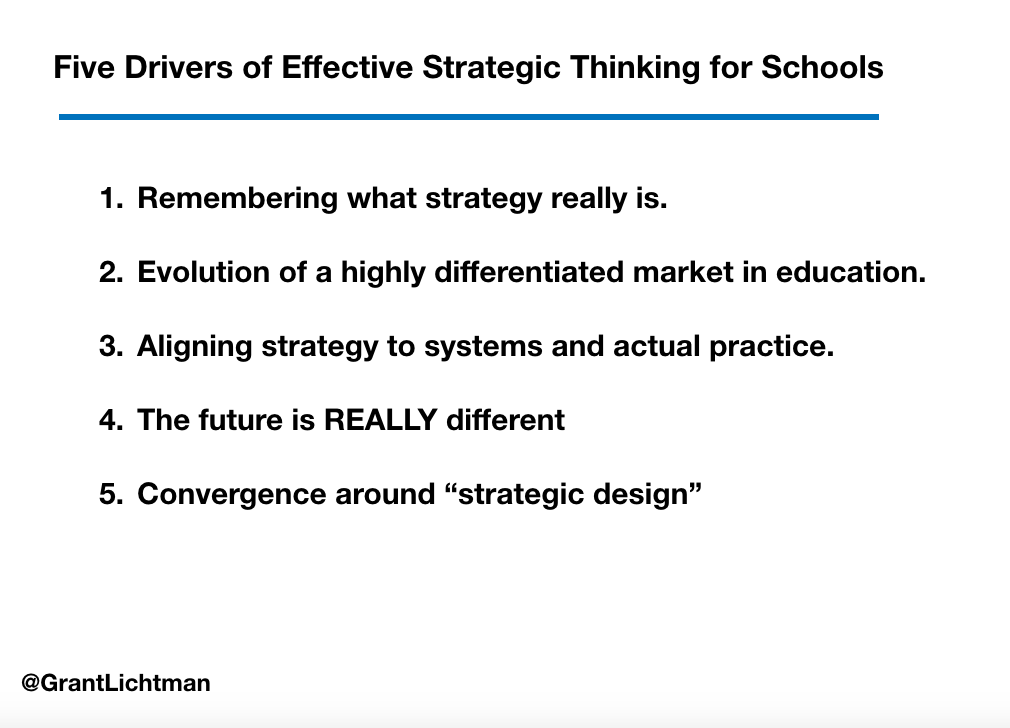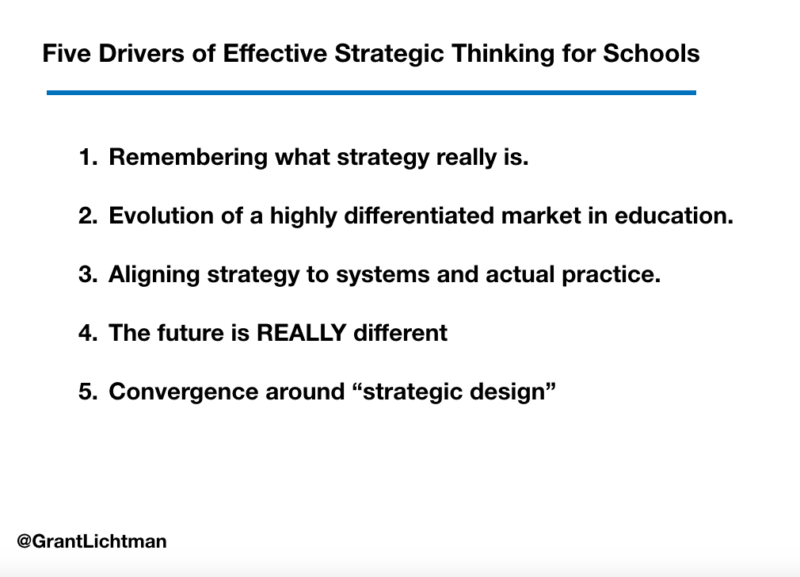I have an upcoming meeting with members of a school board to help them understand how strategic planning is evolving. There is so much to talk about, but I wanted to lay a foundation, so I challenged myself to put together about a ten slide, ten minute summary of what I think schools are doing to deal strategically with a rapidly changing market and world. It boils down to five big drivers around which we are seeing convergence of thinking and practice:
1. Remember what strategy really is. The classic, and still highly valid definition of strategy via guru Roger Martin includes knowing that to which you aspire, defining your market, figuring out how to win in that market, and deciding what products, services, and organizational/management systems you need to perform. All the rest are tactics and, while needing a place, they don’t belong in a truly strategic plan.
2. Evolution of a highly differentiated market in education. 20 years ago the market of education offerings was very narrow; now it is broad, deep, and increasingly differentiated. Most schools, public, private, charter, and all kinds of new models that did not exist a decade ago, now must compete in this market. Competition for students has never been tougher, and that is not going to reverse.
3. Aligning strategy to systems and actual practice. Schools that align vision, systems, and daily practice will deliver a consistent value proposition to their families. Those that do not align at these three levels will not. In competitive markets, organizations that fail to offer and communicate consistent value, usually fail.
4. The future is REALLY different. The future is not a somewhat more high-tech version of today. We are seeing fundamental changes in how humans interact and how we deal (or fail to deal) with a rate of change that has exceeded our individual and collective ability to adapt to those changes. Like other legacy organizations and entire sectors, schools that fail to understand just how rapid and dramatic these changes are risk becoming irrelevant within the next 10-20 years.
5. Convergence around “strategic design”. Rather than sticking with an outdated model of strategic planning that largely tweaks existing practices as seen through narrow lenses of silo-ed interest, design-based practices are more dynamic, inclusive, ongoing, transparent, and promote flexible thinking both ahead of, and in response to, changes in the world around us. Strategy become who we are, not what we do every five years.

















Leave A Comment